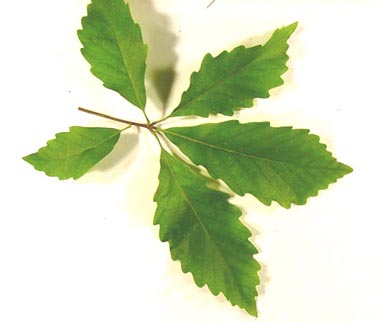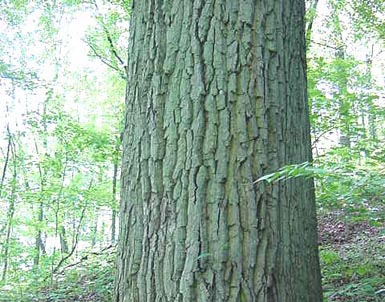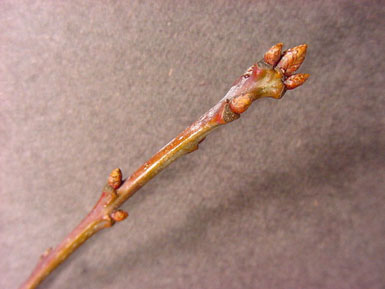Form: It reaches 65 to 80 ft. tall and 2 to 3 ft.in width. On good sites it can reach a maximum size of 100 ft. in height and 6 ft.in width. It generally has a straight trunk and narrow crown.
Leaves:
Arrangement: alternate; simple
Shape: obovate-elliptical
Margin: crenate
Texture: glabrous above, and often finely pubescent below
Venation: pinnate

Bark: Nearly black to a brownish gray, mature trees have very deep and coarse furrows with ridges forming blunt v's in cross section.

Twigs and buds: Twigs are reddish brown to orange. Terminal buds are long and usually acute with brownish-orange scales.

Flowers and fruit: Male flowers are green. Female flowers are reddish brown. They occur as single spikes. Paired or solitary, long ovid shape, lustrous. Acorns about 1 in. long topped with a thin, tight cap with oppressed scales.
Distinguishing characteristics: Look for the crenate margin (very large serrations) on leaves, brown-orange color to twigs and buds.
Range: Occurs primarily in the Appalachian Mountains and in adjacent areas with similar topography. Distributed from southwestern Maine to extreme southeastern Michigan south to extreme northeastern Mississippi. Rare on the Southeastern Coastal Plain, but occurs along the coast in Delaware, New Jersey, New York, and in the New England states.
Silvics: Intermediate tolerance. Upland species, commonly occurring on ridge tops and upper slopes. Found on dry, rocky, infertile soil with a low moisture-holding capacity. Grows best in rich, well-drained soils along streams.
Ecological and cultural importance: The wood is cut and utilized as white oak lumber. When available, due to infrequent large crops of acorns, the acorns are eaten by numerous upland wildlife species, including white-tailed deer, squirrels, chipmunks, mice, and wild turkeys. White-tailed deer occasionally browse young sprouts. Small birds, mammals, and insects such as bees, use cavities for nesting.